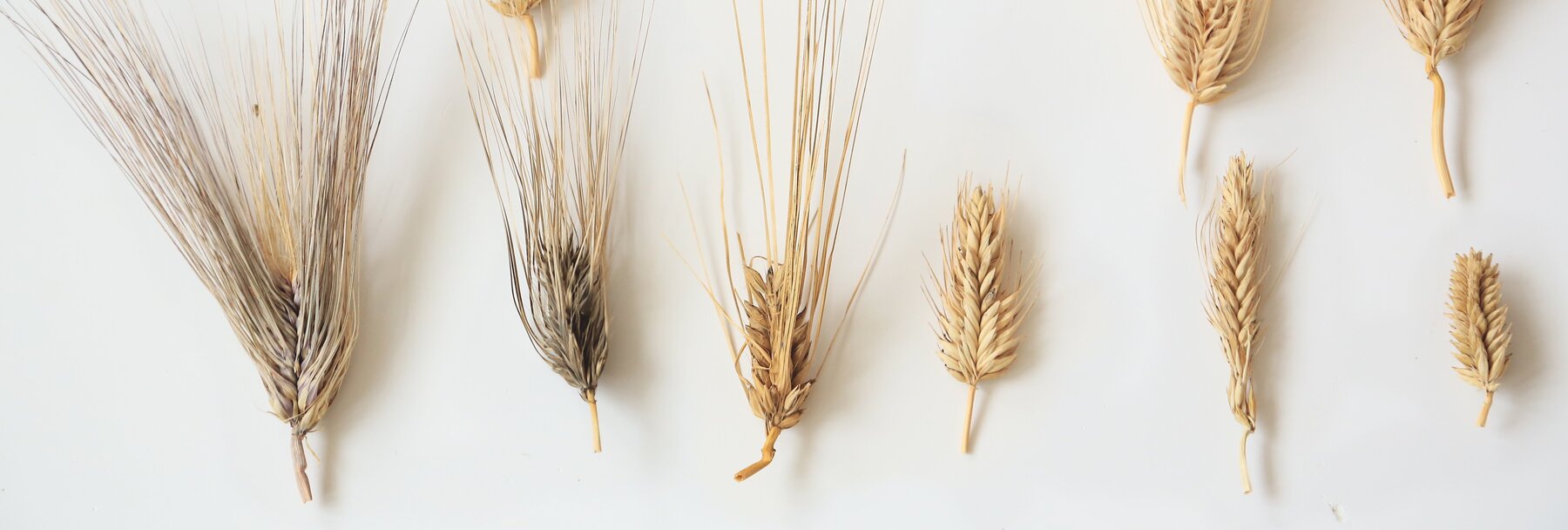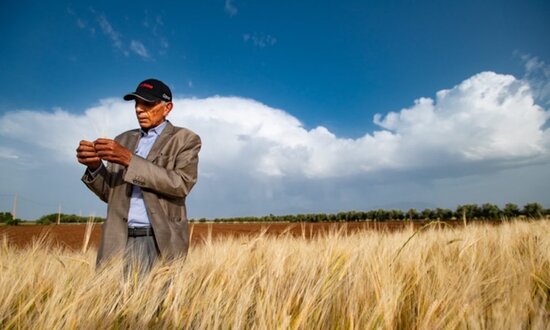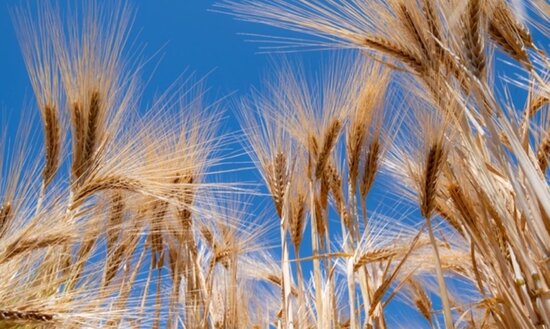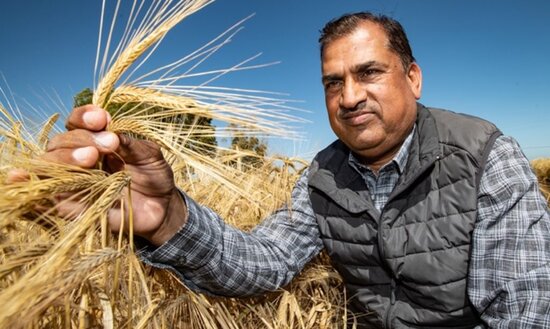Barley
The BOLD Barley Project
The aim of the BOLD Barley Project is to generate new genetic diversity in barley and make it available to plant breeders and farmers. This will contribute to enhancing food security, resilience and livelihoods of barley farmers in areas severely affected by biotic and abiotic stresses due to climate change.
Why barley?
Barley (Hordeum vulgare L.) plays a vital role in providing food security and nutrition for millions of people worldwide. It is the fourth most produced cereal crop globally (about 145 million tonnes in 2021), after maize, rice and wheat. Barley is the predominant cereal in the drylands of North Africa, the Middle East, Afghanistan, Pakistan, Eritrea and Yemen because of its adaptation to dry conditions, poor soils and extreme altitude ranges.
Barley contains higher levels of protein than rice and is also a good source of magnesium, iron, vitamin B6 and especially β-glucan, a dietary fiber with numerous health benefits. It is commonly used in breads, soups and stews, although it is more widely used as livestock feed and as malt for producing alcoholic drinks, especially beer and whiskey. Its dual-purpose nature (food and feed) makes it particularly adapted to the prevalent crop-livestock farming systems typical of most developing countries.
Barley is a genetically diverse crop and able to adapt to a wider range of environments than any other cereal, with varieties suited to temperate, subarctic and subtropical areas. It has extensive tolerance to stresses such as heat, drought and salinity, making it an increasingly important crop in the face of climate change.
Challenges
Barley is currently widely grown in marginal areas, and hence is likely to be strongly affected by climate change, with higher temperatures, more frequent and deeper droughts and changes in occurrence and incidence of pests and diseases, especially in the Mediterranean region and sub-Saharan Africa. Key diseases include leaf rust and yellow rust, net blotch and viruses.
Plant breeders must also respond to the demand for higher yields and improved nutritional and processing qualities.
Building on the Crop Wild Relatives Project
The BOLD barley work builds on work conducted under the Crop Trust's Crop Wild Relatives (CWR) Project, “Adapting Agriculture to Climate Change: Collecting, Protecting and Preparing Crop Wild Relatives.”
Crosses between elite barley lines with barley wild relatives (H. spontaneum and H. bulbosum) produced populations and elite lines with good levels of resistance to major foliar diseases (net blotch, scald and leaf rust) and higher nutritional value (higher β-glucan, iron and zinc content), with some lines having high grain numbers and strong yields. Some of these novel lines were assessed at several sites using participatory approaches involving farmers. The 59 most promising lines were shared with breeders in Australia, Algeria, Ethiopia, Morocco and Tunisia for further evaluation and potential subsequent release.
Project partners
- The International Center for Agricultural Research in the Dry Areas (lead)
- Agricultural Research Corporation, Sudan
- Ethiopian Institute of Agricultural Research, Ethiopia
- Institut National de la Recherche Agronomique, Morocco
- Institut National de la Recherche Agronomique de Tunisie, Tunisia
- Institut Sénégalais de Recherches Agricoles (ISRA), Senegal
- Lake Chad Research Institute, Nigeria
Activities
- Evaluate CWR-derived lines from the CWR Project in breeding pipelines
- Develop new varieties based on elite CWR-derived lines from the CWR Project
- Conduct participatory evaluation of new diversity at farmers’ fields
- Collect and characterize germplasm collections of partner genebanks for target traits
- Make pre-bred lines available for distribution from partner genebanks
- Make performance and characterization data freely available online
Barley resources
Crop Trust stories
- Barley: A Story of Strength. 26 September 2024
- Battling Biotic Stress in Farmers’ Fields. 2 February 2021
- The Last Crop Before the Desert. 3 March 2020
- Benjamin's Excellent Adventure. 3 August 2016
- Brewing up a Genebank Success Story. 14 July 2016
Relevant publications
- Acqbouch, L. 2020. Évaluation des performances de lignées d’orge (Hordeum vulgare ssp. vulgare) issues de croisements interspécifiques. MSc thesis. IAV Hassan II, Rabat, Morocco.
- Rehman, S., Amouzoune, M., Hiddar, H., Aberkane, H., Benkirane,R., Filali-Maltouf,A., Al-Jaboobi,M., Acqbouch,L., Tsivelikas,A., Verma, R.P.S., Kehel,Z., Birouk, A., Amri, A. 2021. Traits discovery in Hordeum vulgare sbsp. spontaneum accessions and in lines derived from interspecific crosses with wild Hordeum species for enhancing barley breeding efforts. Crop Science 61: 219–233.
- Elouadi, F., Amri, A., El-baouchi, A., Kehel, Z., Salih, G., Jilal, A., Kilian, B., Ibriz, M.. 2021. Evaluation of a set of Hordeum vulgare subsp. spontaneum accessions for β-glucans and microelement contents. Agriculture 11(10): 950. https://doi.org/10.3390/agriculture11100950
- Müller, J.V., Cockel, C.P., Gianella, M., Guzzon, F. 2021. Treasuring crop wild relative diversity: analysis of success from the seed collecting phase of the ‘Adapting Agriculture to Climate Change’ project. Genetic Resources and Crop Evolution 68: 2749–2756.





